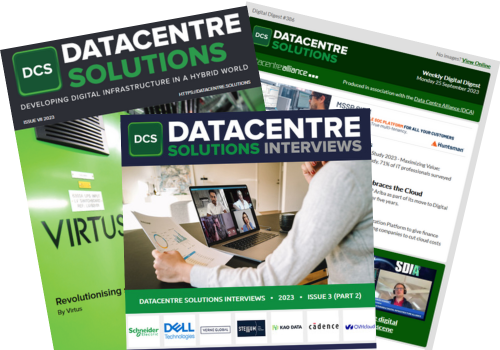“While we are still seeing many businesses shy away from long-term IT investments due to the fluctuating economic environment, the data centre space is changing rapidly,” said Lal Karsanbhai, president for Emerson Network Power in Europe, Middle East and Africa. “Our industry is continuously innovating, introducing new technologies to the market on a regular basis – a trend that we will continue to see over the next year.” Below are five trends shaping the data centre landscape in 2016 and beyond:
- Cloud Gets Complicated
Most organisations are now using cloud computing to some degree. The evolution from SaaS to true hybrid environments, in which cloud services are used to bring greater agility to legacy facilities, continues to advance as more organisations move to a bimodal architecture. Rather than stabilising, however, cloud could get more complex. The latest server utilisation research, conducted by Stanford’s Jonathan Koomey and Anthesis Group’s Jon Taylor, found that enterprise data centre servers still only deliver, on average, between five and 15 percent of their maximum computing output over the course of a year. In addition, 30 percent of physical servers are “comatose,” meaning they have not delivered computing services in six months or more. The push to identify and remove comatose servers will continue to build momentum and is an essential step in managing energy consumption; however, the potential for unused data centre capacity to become part of a shared-service, distributed cloud computing model will also be explored, enabling enterprise data centres to sell their excess capacity on the open market.
- Architecture Trumps Technology
While data centre technology plays an important role in ensuring efficiency and availability, data centre operators are focusing less on technology and more on the architectures in which those technologies are deployed. “Our customers are coming to us to develop a tailored architecture that suits their specific needs and environment. They are no longer automatically looking to the traditional power architecture as they understand that a system that is custom-made to their requirements is able to offer further long-terms benefits including increased availability, efficiency and additional savings,” added Franco Costa, vice president and general manager of power systems for Emerson Network Power in Europe, Middle East and Africa.
- Data Centres Find a Common Language
The Internet of Things (IoT) will not only impact future data centre architectures by increasing the volume of data that must be processed, it will also change data centre management—and the latter sooner than the former. Today’s data centres include thousands of devices that speak a host of languages, including IPMI, SNMP, and Mod Bus. This creates gaps between systems that limit efforts to manage holistically. That limit will cease to exist as Redfish, an open systems specification for data centre and systems management developed by Emerson Network Power, Intel, Dell and HP, gains traction. Redfish will create interconnectivity across data centre systems, enabling new levels of visibility, control and automation. Its adoption will also help establish best practices for effective use of IoT in other applications.
- Social Responsibility Makes its Presence Felt
The industry has been dealing with efficiency since at least 2007, but the focus has largely been financial. Now, with initiatives such as the EU Energy Efficiency Directive outlining a set of binding measures to help reach 20 percent energy efficiency targets by 2020, some businesses are shifting their focus from efficiency to sustainability and viewing their data centres through a social responsibility lens. Data centre operations—including carbon footprint, alternative energy use and equipment disposal—are now being included in corporate responsibility statements, creating greater pressure to make advances in these areas. The impact of this trend will not be limited to on-premise technology decisions. To be meaningful, reporting must include the full data centre ecosystem, including colocation and cloud providers. As this practice grows, sustainability will rise to the level of availability and security as must-have attributes of a high performing data centre.
- The Neighborhood Data Centre Moves In
The growth in digital content consumption and data collection is challenging the centralised data centre model. While large data centres will continue to provide the majority of computing, they will increasingly be supported by edge facilities, or neighbourhood data centres, that provide low-latency content and applications to users or data processing and logic for IoT networks. As these micro data centres, operating as satellites to a central facility, proliferate on corporate campuses and in high-density residential areas, their success will depend on the use of standardised, intelligent systems that can be remotely managed.
“Factors such as sustainability and speed will continue to have an impact on the data centre market throughout the next year,” added Karsanbhai. “In 2016 we will also witness a larger number of organisations who understand what investing in new equipment could bring to their overall operations such as improved data insights and the ability to offer their customers a better service.”








